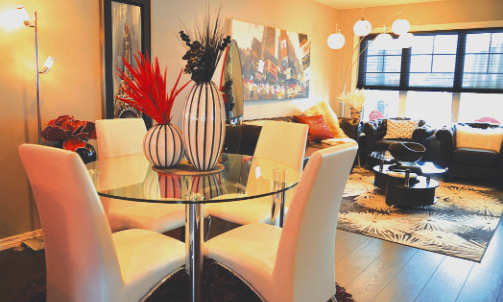
Co-occupancy and co-décor
It is natural that we look out for the simplest and best solution to every challenge we encounter. Thus, with the possible décor conflicts and challenges prone to co-occupancy, we can easily suggest that co-decorating is the perfect remedy.
Advertisement
Understandably, co-decorating your living space is a topic that would eventually come up from time to time in every shared space.
One way or the other, décor and spatial challenges between partners will surface and designing decisions will have to be made.
Generally, it is highly unlikely to get everyone in the household have the same or exact taste décor-wise. So how do two or more occupants live in harmony in a shared space?
Where there disputes that were resolved? Yes, most likely but through the professionalism of astute decorators and designers most of these issues are not seriously noticed.
Where there compromises? Several compromises are required.
Can everyone end up happy and satisfied with the décor? Highly possible, especially when the conflict issues are resolved.
Common conflict issues:
Space ownership: This is not about who owns the building or the house, but who occupies a defined space within the house. For example, the child’s room, here the known occupant is the child, a son or a daughter. This occupant has a lot of influence on the final outcome regarding décor.
Power play and internal politics: When there are clear divisions in the family or group of occupants. For example males against females; the executive (father) against parliamentary select committee (mother and children) on one side and each insisting on their rights and demands.
Lack of consensus: having one mind concerning space use is critical in every décor endeavour. Both the homeuser and the decorator would not want to spend money on inconclusive and irresolute ventures.
Budgetary constraints, so much to be done on a meager budget leaving some things undone at the expense of other’s comfort.
Colour choices and colour coordination
Furniture choices and preferences and general ambiance, who or what determines the final mood of the space, cozy or open?
Clutter issues, cleanliness, and attitudinal tendencies like being casual, carefree or overly meticulous can bring conflict.
Scale and proportion: sizes of furniture can be convenient to some and can bring inconvenience to others. The physique of individuals to a great extent determines proportions and scale of items they can use conveniently.
For example, within a family of tall members a certain shelf height can be very intimidating to the member who is vertically challenged.
Impersonalised space: A space without character has no owner. When spaces are personalised, there is style; taste and definition, occupants and users keep what the character of the space.
When a space is impersonalised, every user wants to give it a character and that brings up more and more conflict.
Other factors: These may border around lighting, appliances, accessories and basic orientation of furniture pieces.
For instance, the issue of lighting can bring conflict in the living rooms and bedrooms of co-occupants as to whether it is pleasing to keep the general light on rather than to use the more task-specific reading lamps.
Watch out next week for things to do to resolve décor conflicts. You are a very strategic part of the resolution.
E-mail: [email protected]: www.integratedinteriorsgh.com Blogging: raphaellangdon.blogspot.com



